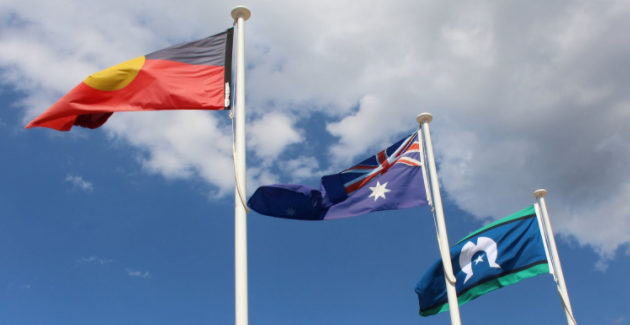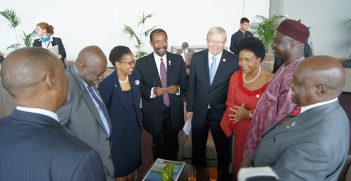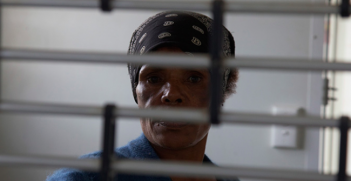Indigenous Self-Determination and International Law

This year’s National Reconciliation Week marks the 25th anniversary of the Mabo decision, which provided legal recognition that Aboriginal and Torres Strait Islander peoples have a special relationship to the land. However, despite support in the UN for self-determination, until quite recently, international law has had little influence on self-determination for Indigenous peoples in Australia.
When Europeans first set out for the New World more than 500 years ago, they did not regard Indigenous peoples as being competent to rule themselves. Aborigines and Torres Strait Islanders were dispossessed of their lands because they were not Christians and did not till the soil. The British perceived the country as scantily inhabited, despite the fact that at the time of their arrival it was in the possession of possibly several million people and had been so for a very long time.
To circumvent the fact of settlement, the British considered it not settled but rather as terra nullius. The Crown accordingly acquired full beneficial ownership, ignoring the long-established practice in North America of purchasing occupied land from the natives. The Aboriginal and Torres Strait Islander peoples have never abandoned belief in their separate status.
Lack of international recognition
After World War II, there was growing support in the UN General Assembly for the human right to self-determination. The focus was on post-colonial liberation. Even by the 1960s, the only possible UN declaration on self-determination contained no recognition of indigenous peoples. International law, for its purposes, did not recognise indigenous groups as ‘peoples’.
It was only in 1976 that the Geneva-based Commission on Human Rights (CHR) established a working group on indigenous populations. The path-breaking inquiry by José Martínez Cobo, the CHR’s special rapporteur, listed relevant features of indigenous peoples, but International Labour Organization Convention 169 left it to “independent countries” to determine the peoples’ (sovereign) status. Tired of waiting, the world’s indigenous peoples began to look for more substantive recognition at home rather than in international law. Their international struggle was to take three decades before the United Nations Declaration on the Rights of Indigenous Peoples (DRIP) was endorsed in 2007.
Australian developments
In Australia, there were some hesitant steps forward after the 1967 referendum, with the appointment by the executive, without Aboriginal representation, of the Council for Aboriginal Affairs. A decade later, there was still no recognised national Aboriginal and Torres Strait Islander organisation, although in 1973 the council was superseded by the Department of Aboriginal Affairs. A significant step was the adoption by Commonwealth executive branch action in the mid-1970s of individual self-determination for Indigenous peoples. The decision was that it was not by ‘race’ but by whether the individual wished to be identified as part of an Indigenous group, and the relevant community was willing to recognise the person as a member. In form (but often not in substance), the racist caste system was abolished. International law, except possibly through the Racial Discrimination Act (RDA), was not invoked.
In 1989, under the influence of the then Minister for Aboriginal Affairs, Gerry Hand, a new vision of the relationship between Aboriginal and Torres Strait Islander peoples and government opened up. Although still working within the prevailing legal framework, the Aboriginal and Torres Strait Islander Commission Act 1989 (ATSIC Act) established the first legislated national representative body.
International law was not invoked by the 1990s’ Royal Commission into Aboriginal Deaths in Custody, which proposed a holistic domestic view of measures designed to promote self-determination. However, from about that time, and particularly with the establishment in 1993 within the Human Rights and Equal Opportunity Commission (HREOC) of the Aboriginal and Torres Strait Islander Social Justice Commissioner, participation in international indigenous activities was able to progress, assisted by increasingly creative international contact.
The ATSIC Act was amended in 1994 to provide more secure funding in the land acquisition area and to recognise the separate situation of Torres Strait Islanders. And then followed perhaps the most influential ‘outside’ recommendations relating to self-determination, through the HREOC s 1995 report ‘Bringing Them Home‘. The commission recommended “national legislation establishing a framework for negotiations at community and regional levels for the implementation of self-determination.”
Although originating in the inquiry into children, HREOC saw its recommendation as applying to all Aboriginal and Torres Strait Islanders and was in effect the first official recognition of their international status.
During the following decade, the cause of self-determination suffered severe setbacks through the Coalition government’s 1998 ‘10-point plan’ reductions in the protection of native title land accorded by the Native Title Act (NTA). ATSIC was abolished in 2005.
Towards implementation
Following the election of Kevin Rudd’s government in 2007, the Coalition’s refusal to support DRIP was reversed. To some degree, Rudd’s Sorry Statement of 13 February 2008 undid the destructive effects of the application of the doctrines of ‘protection’ and ‘discovery’ that had led to the HREOC’s Bringing Them Home report. Ironically, as with the HREOC report, the focus of the Sorry Statement was on children, but it envisaged much broader redemptive efforts, and was graciously received by Aboriginal and Torres Strait Islander peoples.
In an effort to restore consultative and participatory action, the Commonwealth, in late 2008, requested Aboriginal and Torres Strait Islander Social Justice Commissioner Tom Calma to convene an independent steering committee of Indigenous people to develop a model national representative body. The outcome was the proposal for the National Congress of Australia’s First Peoples. But it was again not based on any international law precepts.
The negative aspects of the suspension of the RDA in the Northern Territory have still not been entirely removed and little has, as yet, been achieved towards legislation based on the DRIP. The DRIP as a whole can, and should, be read as providing for the undoing of the discovery doctrine. Many of its provisions are linked strongly to autonomy for indigenous communities and individuals, although neither the ILO Convention 107 nor ILO Convention 169 has been ratified by Australia. Nor have the key provisions in DRIP been reflected in Australian law.
Issues for the future
International law has generated ideas and has enabled Indigenous people and their supporters, drawing on it, to put pressure on governments. But it has not been adequately deployed by those governments to play a satisfactory part in achieving overall Indigenous welfare and recognition.
The existence of a federal system has led to inequalities in state and territory management of the Indigenous populations within their powers, and the Commonwealth itself has been unduly hesitant in setting firm standards based on international law standards.
Commonwealth legislation has not been consistent in all states and territories, and it has failed to use its external affairs power to reinforce international law policies on land and over relevant coastal and sea areas. It has not listened sufficiently to the anxieties of Indigenous people and their leaders in its planning for some kind of recognition through a referendum. Nor has it supported adequately the promising but still evolving national representative body for Aboriginal and Torres Strait Islanders.
We hope to promote acceptance of, and support for, the unique role that Indigenous peoples, as original inhabitants, have in Australia. Indigenous peoples should be sensitively and supportively recognised as being in a significant and clearly different category from the rest of the population, and should in no way be confused with immigrants and refugees.
Professor Mick Dodson AM is director of the National Centre for Indigenous Studies at the Australian National University and professor of law at the ANU College of Law.
Asmi Wood is associate professor at the ANU College of Law.
Peter Bailey is adjunct professor at the ANU College of Law.
This is an abridged version of Dodson, Wood & Bailey, ‘Australia and the International Protection of Indigenous Rights’, in International Law in Australia, 3rd Edition, (Thomson Reuters, 2016). International Law in Australia, 3rd Edition, edited by Don Rothwell and Emily Crawford, is a publication of the Australian Institute of International Affairs and can be purchased here.





